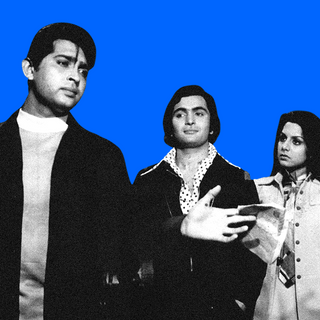
Indian Filmmakers’ Bid to Churn Magnum Opuses Is Rooted in Hypermasculinity
The desire to leave the biggest, grandest legacy is rooted in masculine individualism, and hurts storytelling.

We’re in the magnum opus era of Indian cinema. But what do we lose when art is tied to a fixation on an individual’s legacy?
For one, magnum opus works of art are less about the art themselves, and more about their creators. They’re about leaving behind a legacy that endures through the ages — leaving a person’s name resonant across generations. With filmmakers attempting to create pan India movies to serve as the magnum opus they’d be credited with, at present, the the phenomena of both pan India cinema and magnum opuses have come to overlap. They intersect in their collective desire to achieve the biggest, grandest feat — leaving a gigantic mark that changes cinema forever. This is, at its core, a masculine impulse.
“Only people who have a plausible hope of being immortalized in history are so obsessed about how they might get immortalized,” says Eden, in Hanya Yanagihara’s To Paradise. And it’s a white male fixation, she adds. In the context of filmmaking in India, there’s something more at play than just profit and power — it’s the quest to be known for a defining piece of work. In the process, it’s the (Savarna) man who is defined by the work; the latter serves as a vehicle for an individual’s own legacy. This undermines storytelling — and also continues a masculine tradition of defining greatness through the occupation of space.
Take the recent slew of larger-than-life films. Alia Bhatt’s character in Brahmastra has turned into a meme for how she only has a few lines — most of them involving saying the male protagonist’s name. In RRR, her character is once again a backdrop for someone else’s story — an accessory to greatness and legacy while being neither. And in the newly released trailer of Adipurush, a muscular Ram is seen battling dark, dangerous forces with mythic strength and tenacity, carrying all the hallmarks of a “great” — even “legendary” — story. The antagonist, too, has a towering presence; Kriti Sanon as the female lead, however, makes a blink-and-you-miss-it appearance in a trailer that makes it abundantly clear how the narrative hinges on the hypermasculine displays of strength by Ram and Raavan.
All of these films are directed by men, and are hailed as their respective magnum opuses. What they all have in common, however, is the gigantism, the muscle-flexing not only in terms of their protagonists, but also in terms of their aspirations to vanquish the box office. All eyes are on size, scale, and spectacle — leaving little room for much else.
Linda Nochlin’s groundbreaking essay Why Have There Been No Great Women Artists? asked a question that still rings true: “What if Picasso had been born a girl? Would Senor Ruiz have paid as much attention or stimulated as much ambition for achievement in a little Pablita?” It speaks to this tension between art and masculinity: the only kind of art that’s been immortalized is those created by men. These are the people who become great, who have a magnum opus to call their own and that defines them — serving as an aspiration for all who follow.
Related on The Swaddle:
How the ‘Pan‑India’ Movie Phenomenon Embodies — And Redefines — Toxic Masculinity
Nochlin analyzes how men were always allowed to be individuals, pursuing their passions and creativity for a greater calling or purpose; women, on the other hand, faced institutional hurdles towards doing so. It speaks to how there came to be an individualism woven into the legacy of art itself — it’s because men were the individuals, sans societal obstructions, able to create it freely. Looking at the institutions inherent in the production of art reveals, in Nochlin’s words, the “romantic, elitist, individual-glorifying, and monograph-producing substructure” of art history — and, by extension, art itself.
This social structure is “determined by specific and definable social institutions, be they art academies, systems of patronage, mythologies of the divine creator, artist as he-man or social outcast,” Nochlin continues.
Today, the institutional machinery at play behind the release of a magnum opus film is telling. There’s keen deference to the box office, volume of profit, and tracking of ticket sales — all are institutional barometers of the quality of a work of art because they were made to be. The logic of scale and grandeur is not one that came to influence how movies are made “naturally” — meaning that this logic doesn’t need to exist at all.
To question the inherent preoccupation with legacy, permanence, and grandeur within men making art is to question the terms of measurement. Why does a box office record render something a “hit” — and, moreover, who created the imperative to weigh art by the money it generates? Shifting the emphasis away from numbers then opens up further foundations we’ve taken for granted: the notion of who, or what, carries mass appeal that drives up numbers is determined by who in the population has the most access to public space and cinema itself.
Men, in other words, like seeing men do great things — and this has, over time, come to coincide with other men’s investment in their own greatness to result in a slew of movies that focus only on men’s heroic deeds.
In a sharp observation about the cult of “Great Art” that preoccupies male artists, Valerie Solanas (known also for shooting the “Great Artist” Andy Warhol) in SCUM Manifesto wrote, “The male ‘artist’ attempts to solve his dilemma of not being able to live, of not being female, by constructing a highly artificial world in which the male is heroized… and the female is reduced to highly limited, insipid subordinate roles…”
Between Baahubali and Brahmastra, then, where is the space for levity, impermanence, and fleeting joys? These, too, are what make us human and define the human condition, but these are forgotten in the race to tell great stories and create great art. It begs not only the question of who gets to create a magnum opus, but also — who defines what a magnum opus can be?
Rohitha Naraharisetty is a Senior Associate Editor at The Swaddle. She writes about the intersection of gender, caste, social movements, and pop culture. She can be found on Instagram at @rohitha_97 or on Twitter at @romimacaronii.
Related


Woe Is Me! “My Male Colleagues Won’t Let Me Talk in Meetings. What Do I Do?”
